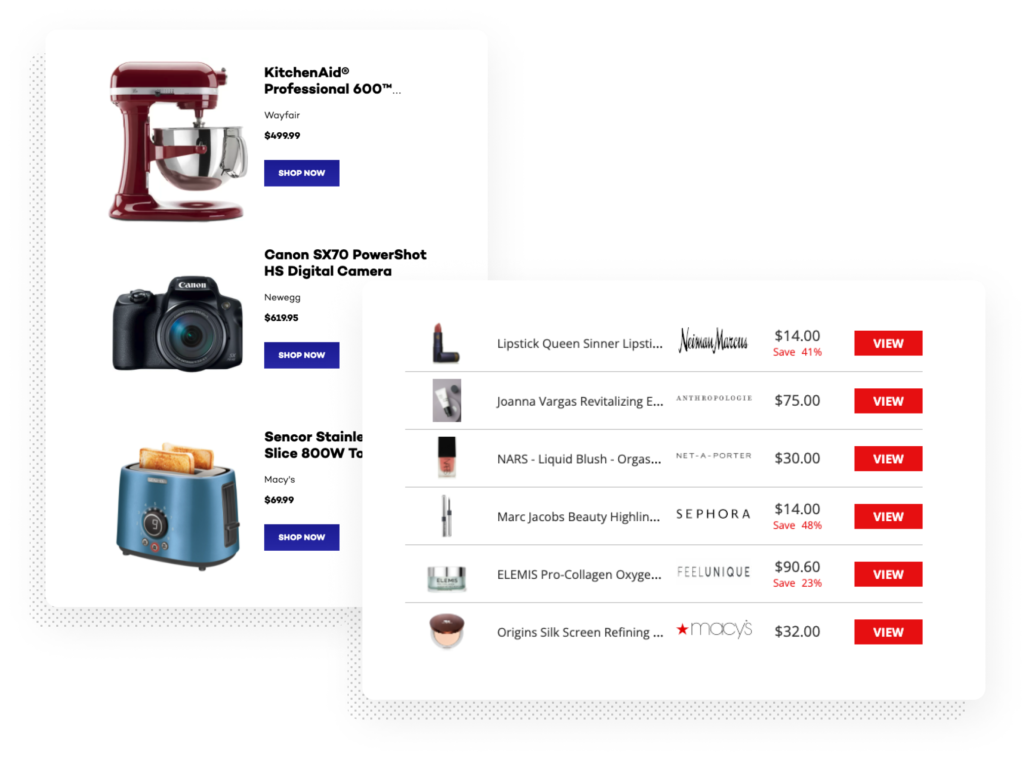This blog was originally published on Digital Context Next InContext.
As online shopping habits evolve, ecommerce is becoming an increasingly attractive revenue opportunity for publishers. We can’t predict what will happen as the pandemic wanes, but prominent studies suggest that ecommerce will continue its upward trend in the coming years.
Given this rosy outlook, now is a great time to investigate the potential of ecommerce (or revisit your strategy). But ecommerce success isn’t guaranteed. It takes careful planning, smart choices, and the right technology partner.
If you’re looking for expert perspective on the key elements of a successful ecommerce strategy, take the time to read Ecommerce in Publishing: Trends and Strategies. Sponsored by Sovrn and published by What’s New In Publishing (WNIP), this new report offers deep insights into the ecommerce space to help publishers develop a winning ecommerce strategy (that goes beyond affiliate). It also provides insights on how to deliver an exceptional shopping experience and maximize revenue.
3 considerations for your ecommerce strategy
Whether you’re just starting out looking to enhance your strategy, there are certain key topics you’ll need to consider. Here are three of the big takeaways from our report:
1. Changing technologies
As ecommerce becomes increasingly enmeshed in the day-to-day digital experience, it’s easier than ever for consumers to make online purchases. And purchase capabilities now span a wide variety of channels – from traditional websites to social media outlets, mobile apps, and more. For publishers, this opens up new ecommerce opportunities that go far beyond traditional affiliate marketing, like curated online stores, subscription boxes, buy-now-pay-later (BNPL) models, and more.

Things move fast in the world of online publishing, so there’s always a new tactic or technology to explore. At the same time, tried-and-true revenue sources can fall out of favor without warning. We’re seeing this play out before our eyes in recent months, with Facebook’s first-ever decline in usage and the phenomenon of “subscription fatigue.” Publishers who tap into multiple selling channels will have more revenue opportunities — and better protection from market volatility — than those who stick with a single online platform or property.
Look for flexible, easy-to-use solutions that work with almost any type of commerce content and one that evolves along with the industry. We believe personalization that delivers a unique shopping experience tailored to readers is the right approach. Also, tools such as price comparison make it easy to cut through the noise and help your readers find the best deals on the products they want.
2. Culture and content fit
It’s important to recognize that ecommerce is not a one-size-fits-all venture. Some ecommerce tactics will work better than others for your brand, your content, and your unique audience. Gaining a deep understanding of your reader base is a fundamental step in developing an approach to ecommerce that will resonate with your audience and selecting the products and merchants they’ll love.
Make sure you analyze which products and merchants are most appealing to your readers. For example, your audience may have strong engagement with certain content, or they may prefer a certain brand that’s featured on your site.
With a better understanding of your overall affiliate program, you can continue to refine your affiliate strategy and drive more revenue. A dashboard can help you identify these trends, by displaying performance metrics and delivering insights on what’s working (and what’s not).
3. Merchant diversification
Ecommerce success requires forming mutually beneficial partnerships with merchants that appeal to your audience. Most publishers start out promoting a single merchant like Amazon or Walmart, because they offer affiliate programs that are easy to understand and implement. But these internal programs rarely offer the highest rates or the most desirable products — and when your earnings rely on a single merchant, any change in commission structure can devastate your revenue stream.
By diversifying your merchant mix, you can ensure that no single vendor has a disproportionate impact on your earnings — and you’ll be in a better position to adjust your strategy in response to market fluctuations. Of course, your target merchant list may change over time as your content and your audience continue to evolve. You may also discover that individual merchants revise their requirements for affiliate approval from time to time — so it can be challenging to maintain a steady mix of merchants on your site.
Maximize your ecommerce potential
Undoubtedly, we’ve seen an acceleration in the adoption of ecommerce that presents an enormous opportunity. Media companies that offer content that fits seamlessly into the shopper’s journey are in a position to benefit from this trend. With the right strategy in place, publishers are poised to be a vibrant part of the growing ecommerce marketplace.

